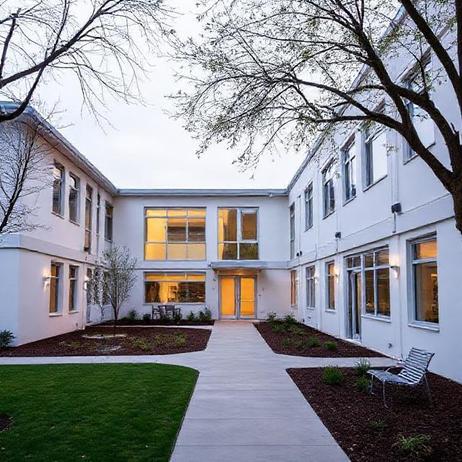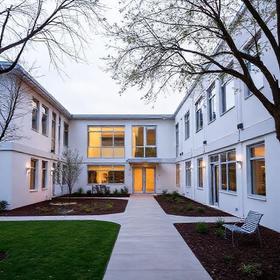Safety, Emergency Protocols, and Security in Boarding Schools: What Parents Ask and What Schools Should Disclose
Parents choosing a residential environment for their child want assurance that safety, emergency protocols, and security in boarding schools are comprehensive, current, and consistently applied. The expectations placed on today’s campuses have expanded significantly, and families in 2025 ask more detailed questions than ever before.
This guide explains how safety, emergency protocols, and security in boarding schools work, what parents routinely ask during the admissions process, and what schools should proactively disclose. It includes practical examples, recent updates, and guidance on how to evaluate a school’s preparedness with confidence.
Why Safety, Emergency Protocols, and Security in Boarding Schools Matter More in 2025
Boarding schools today operate in a complex environment. Schools must protect students living on campus 24 hours a day, manage evolving health and behavioral needs, and ensure readiness for natural disasters, cyber threats, and community risks.
Parents expect that safety, emergency protocols, and security in boarding schools are supported by professional training, modern technology, and clear communication. These expectations often shape enrollment decisions.
For background on how boarding schools operate and care for students, families can review foundational overviews such as the Benefits of Boarding School on BoardingSchoolReview.
What Parents Commonly Ask Schools About Safety, Emergency Protocols, and Security
Parents frequently ask detailed questions about residential life, supervision, emergency readiness, and communication. While concerns vary, several categories consistently arise.
Daily Supervision and Staffing
Families want to know who is overseeing students and how closely.
Common questions include:
How many adults live in the dorms full time
How staff monitor student well-being during evenings and weekends
Whether faculty receive mental health, first aid, and crisis-response training
What the school’s approach is to discipline, conflict resolution, and community standards
In 2025, most boarding schools employ residential teams that include dorm parents, trained assistants, and student life staff. Strong supervision is foundational to safety, emergency protocols, and security in boarding schools.
Medical, Mental Health, and On-Campus Clinical Services
Parents routinely ask:
Is there a 24-hour health center
How is medication managed
Are mental health clinicians available on campus
How are medical emergencies handled overnight
After the pandemic era, families expect detailed information about infection control, isolation spaces, and communication practices. Schools should be transparent about staffing qualifications, telehealth partnerships, and protocols for serious illness.
For more guidance on understanding the student experience, families can explore topics such as Health and Safety in Private Schools.
Security of the Physical Campus
Parents want to understand how the physical environment is protected. Schools should expect questions such as:
Are entrances controlled with ID access
Are surveillance cameras used and monitored
Do security officers patrol campus or partner with local police
How are visitors screened
Modern expectations for safety, emergency protocols, and security in boarding schools include layered systems that rely on people, policies, and technology. This may include locked dormitories, lighting strategies, campus patrols, and perimeter monitoring.
Emergency Response and Crisis Protocols
Emergency preparedness is one of the most important topics for parents. They commonly ask:
What types of drills occur and how often
How the school handles severe weather events
How campus lockdowns or shelter-in-place procedures work
Whether the school uses mass notification or alert systems
Recent years have pushed schools to refine plans for wildfire smoke, floods, public health disruptions, and cyber breaches. High-quality safety, emergency protocols, and security in boarding schools are updated annually and involve coordination with local agencies.
Student Conduct, Boundaries, and Preventive Safety Measures
Students living away from home need clear guidance and boundaries. Parents want to know:
How dorm access is restricted
How schools prevent bullying and harassment
How staff supervise off-campus trips
What expectations exist for digital conduct and device use
This area is closely tied to a school’s culture. Schools with strong residential life programs integrate community expectations into orientation, advisory programs, and ongoing dorm meetings.
Communication With Families
Consistent, transparent communication is essential to safety, emergency protocols, and security in boarding schools. Parents want to understand:
How they will be notified during emergencies
Who contacts them during a medical issue
How often they’ll receive routine updates
Whether communication systems are tested
Schools that communicate clearly tend to earn stronger trust and parent partnership.
What Schools Should Disclose to Families
Boarding schools have an opportunity to build confidence by presenting their safety, emergency protocols, and security practices proactively. At a minimum, they should provide:
1. A Comprehensive Safety and Crisis Response Overview
A clear description of emergency procedures helps parents understand the school’s readiness. It may include:
Types of emergencies planned for
How drills are conducted
Roles of administrators, faculty, and local responders
How students are trained
How information is communicated during crises
Publishing updated protocols annually demonstrates accountability and transparency.
2. Staffing, Training, and Qualifications
Schools should outline:
Dorm staff-to-student ratios
Clinical and health personnel availability
Security team credentials
Professional development related to student safety
Mandatory reporting procedures
Clear staffing descriptions help parents evaluate how safety, emergency protocols, and security in boarding schools are supported on a daily basis.
3. Technology Used for Campus Safety
Parents increasingly expect schools to disclose tools such as:
Access control systems
Visitor management software
Camera coverage and monitoring practices
Campus lighting and alarm systems
Emergency notification apps
Technology should supplement, not replace, human supervision.
4. Health Services and Mental Health Resources
Schools should share:
Hours of operation for the health center
Availability of licensed nurses and counselors
Partnerships with local hospitals
Chronic care management
On-call systems for emergencies
A well-staffed health center is a cornerstone of safety, emergency protocols, and security in boarding schools.
5. Community Standards, Conduct Expectations, and Reporting Systems
A healthy community is one of the strongest protective factors for students. Schools should disclose:
Codes of conduct
Anti-bullying policies
Digital safety policies
How students can report concerns anonymously
Transparency helps families understand how schools maintain a culture of respect.
For more on how schools create community and structure, readers can explore Understanding Boarding School Supervision.
Evaluating a School’s Safety, Emergency Protocols, and Security: A Parent Checklist
Parents touring schools or meeting with administrators can use a practical checklist to compare approaches.
Campus Safety Questions
How is campus access controlled
Are security officers present at all times
What is the school’s visitor policy
How does the school handle nighttime supervision
Health and Medical Readiness
Does the school offer 24-hour clinical support
Who prescribes and manages medications
How are chronic conditions monitored
What protocols exist for communicable illnesses
Emergency Preparedness
How often are drills practiced
How are lockdowns or severe weather events handled
How will parents receive alerts
Does the school partner with local emergency agencies
Student Life and Community Standards
What training do dorm staff receive
What supervision rules exist for weekends and free time
How are conflicts addressed
How do students report concerns confidentially
A Comparison of Key Safety Components
| Area of Safety | Modern Boarding School Practice | What Parents Should Look For |
|---|---|---|
| Supervision | Dorm parents, trained assistants, professional staff | Clear ratios, visible presence, trained personnel |
| Health Services | Licensed nurses, clinical partnerships, telehealth | 24-hour coverage, clear protocols |
| Security | Access control, cameras, patrols | Layered approach, updated technology |
| Emergency Response | Drills, coordinated plans, digital alerts | Transparent communication, regular updates |
| Student Conduct | Community standards, advisory programs | Strong culture, prevention-focused policies |
This table highlights how safety, emergency protocols, and security in boarding schools are evaluated in a practical way.
How Schools Can Strengthen Safety, Emergency Protocols, and Security Long Term
As risks evolve, boarding schools must update their practices continuously. Current trends shaping safety, emergency protocols, and security in boarding schools include:
Increased collaboration with mental health providers
Greater use of real-time communication tools
More frequent staff training sessions
Stronger partnerships with local emergency management agencies
Expanded digital literacy and cybersecurity education
Schools should treat safety as a shared responsibility among students, staff, and families.
For a broader look at school comparisons and environments, readers can review comprehensive profiles on Private School Review.
Conclusion
Families selecting a boarding environment deserve clear, comprehensive insight into safety, emergency protocols, and security in boarding schools. Schools that embrace transparency, invest in staff training, and communicate consistently build trust and create safer communities.
Parents who ask detailed questions and evaluate how each school supports student well-being can make confident decisions that align with their child’s needs. When safety, emergency protocols, and security in boarding schools are prioritized, students thrive academically, socially, and emotionally.











